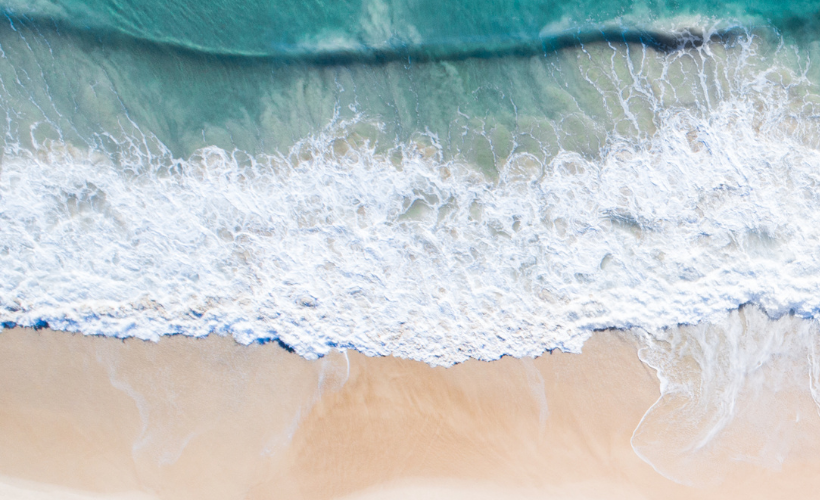
Everyone loves a day at the beach with family and friends, but it is important that everyone knows how to stay safe when visiting Australia’s beaches. Every year many people lose their lives when swimming, surfing, snorkelling or playing in the water.
In the last 20 years (2002-2022), there have been an average of 51 unintentional drowning deaths at a beach.
The Red and Yellow Flags on a beach show safe places to swim, and where lifeguards or lifesavers watch people to keep them safe. This is called a patrolled area, and the lifeguards are there to help if you or a family member/friend need help in the water. Not every beach in Australia is patrolled by lifeguards/lifesavers; check the Beachsafe website or app to find the closest patrolled beach.
If there are no flags on the beach, this means there are no lifeguards/lifesavers on duty and swimming at the beach is not recommended, especially if you are unfamiliar with the area and have limited swimming ability or experience.
Dangers at the beach include rip currents, big waves, shallow sandbanks and marine animals.
How to stay safe
- Swim at a patrolled beach, and between the red and yellow flags
- Look for and read the safety signs
- Recognise hazards and dangers
- Avoid swimming or recreating alone, as no will be able to assist or call for help in an emergency.
- Never swim at an unpatrolled beaches
- Avoid swimming at night
- Always actively supervise children and keep them within arms’ reach
- Ask the lifeguards/lifesavers for advice about beach conditions
- Do not swim after consuming alcohol and/or drugs
- Do not enter the water if there are doubts about swimming ability
- Protect yourself from sun and stay hydrated by drinking plenty of water
Safety signage
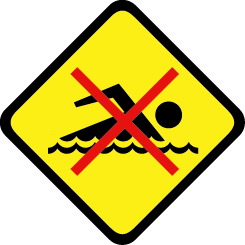 | 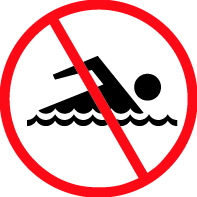 | 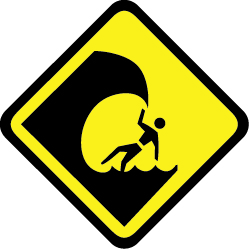 | 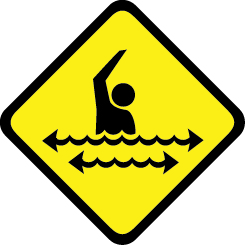 |
| Unsafe for swimming | No swimming | Dangerous surf, big waves | Strong currents |
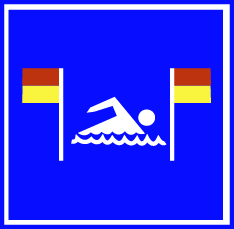 | 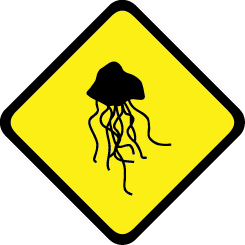 | 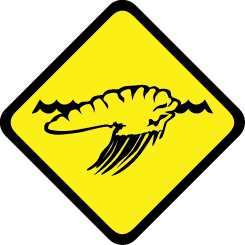 |
| Swim between the flags | Marine stingers under water | Floating marine stingers |
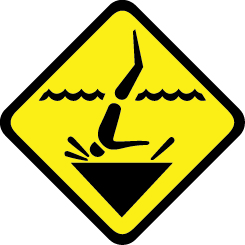 | 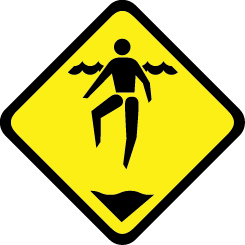 | 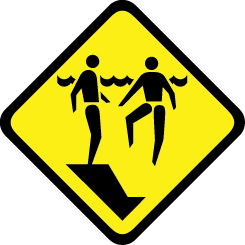 |
| Shallow water. Not suitable for diving | Deep water | Sudden drop off |
Rip currents
Rip currents (often known as rips) are a common hazard on most Australian beaches. Many people are known to have drowned after being caught in a rip current. Rip currents are fast-flowing currents where the water flows out in the direction toward of the open sea. Swimming between the flags is the best way to avoid getting caught caught in a rip. Recognising a rip current is the first step to being able to avoid getting caught in one.
How to spot a rip current?
- Deeper dark colored water with fewer or no breaking waves
- Discoloured brown water and foam on the surface beyond the breaking waves
- Rippled water and debris floating out to sea
What to do if you get caught in a rip and feel yourself being pulled away from the shore?
- Stay calm and do not panic
- Float on your back and float with the rip – it may carry you back to shore
- Signal for help by raising one arm and call out to attract attention
- Wait to be rescued
- If you are a strong swimmer and not tired, try to swim parallel to the shore or towards the breaking waves to return to shore
- Never try to swim against the rip, you will get tired and exhaust yourself
For more information, see the Surf Life Saving Australia information page on rip currents.
Marine animals
Marine animals, such as jellyfish (also known as stingers), are common in Australian waters and, although they are pretty, can cause pain or reactions when touched.
Look for signs at the beach advising you whether there are any marine animals to watch out for.
One of the most common stingers found in Australian beaches is the bluebottle jellyfish which has long blue tentacles and a blue balloon. You may see these washed up on the shoreline. If the tentacles touch the skin, they can cause pain, irritation and sometimes a skin rash.
If you get stung, wash the tentacles off with your fingers, and flush with hot (but not scalding!) water. If pain is not relieved, or there are signs of an allergic reaction, seek medical assistance.
Other marine creatures to watch out for are tropical stingers, which include box jellyfish and iruknadji. These are different because their stings can be life threatening. Tropical stingers are found in northern Australia, including parts of Queensland and Western Australia. If you or someone with you gets stung by tropical stingers, It is extremely important to get first aid treatment immediately using the following protocol:
- Call emergency services
- Be prepared to give first aid treatment including CPR
- If available, apply vinegar to the sting
- Transport the person to a medical facility as soon as possible
References and further information
Analysis of unintentional drowning deaths in Australia 2002-2022
